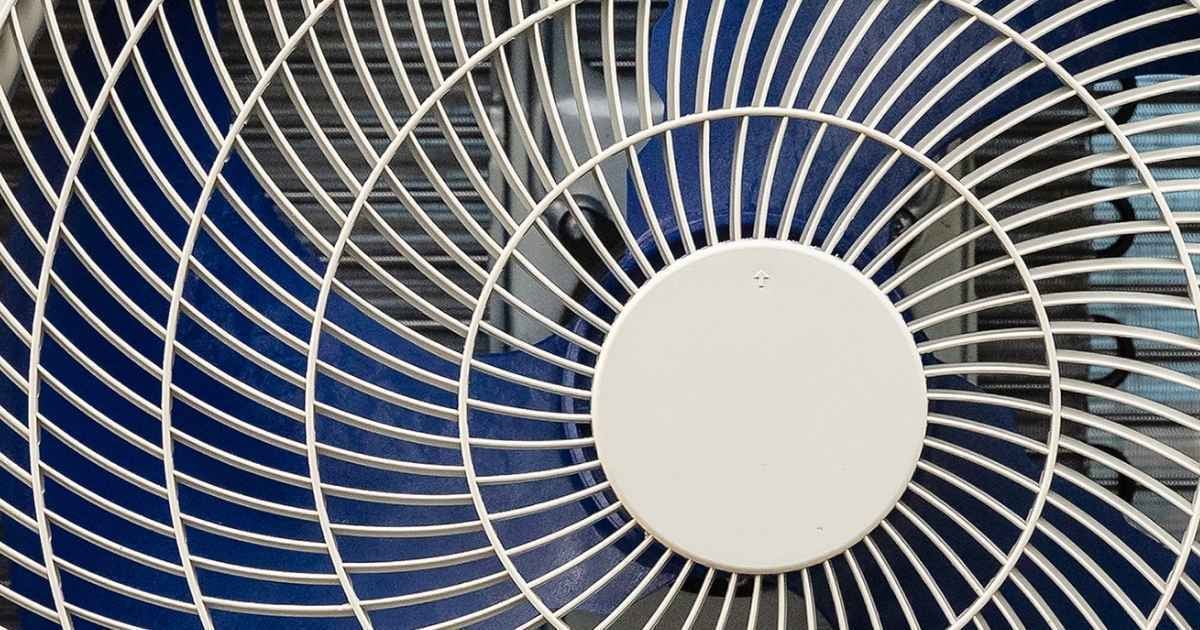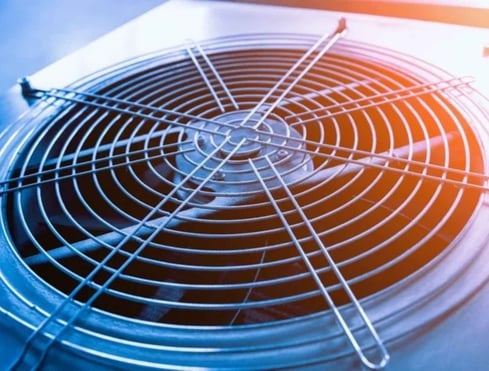How Running Your HVAC Fan 24/7 Impacts Energy Bills in New England
October 8th, 2025
4 min read
By Chris Cason

You’re sitting at your desk, flipping through last month’s utility bill, when something feels off. Your tenants haven’t changed. Your HVAC system hasn’t changed. But your costs? They’re climbing like it’s a stairmaster set to “punish.”
If you run your HVAC fan 24/7, you might be quietly bleeding money without realizing it.
At Harold Brothers Mechanical Contractors, we’ve seen this play out in buildings all over New England. The “fan on” setting seems harmless, even helpful, but in reality, it’s one of the sneakiest ways to spike your energy bill.
Let’s break down what constant fan operation really does to your bottom line (and your building).
The Real Cost of Leaving Your HVAC Fan “On” All the Time
Meet Kathy, a facility manager for a mid-sized office building outside of Boston. She kept the HVAC fan on “just to keep air moving.” Seemed reasonable, right?
Over time, she noticed her energy bills creeping up, about 12% higher year over year. In fact, as detailed in our Annual HVAC Operating Costs for New England Commercial Buildings guide, energy often dwarfs all other operating expenses in commercial HVAC systems.
On top of that, her blower motor had to be repaired twice in the past year. When her summer tenants started complaining about sticky, humid conference rooms, she realized something was wrong.
The culprit? That innocent-looking “fan on” switch.
Once she switched the setting to “auto,” her building’s energy costs dropped by hundreds of dollars the very next billing cycle. Maintenance headaches faded, too.
Multiply that across a portfolio of buildings, and the savings are serious. In Massachusetts, programs like Mass Save’s Commercial Heating & Cooling incentives even offer rebates for upgrading to systems that automatically cycle fans to save electricity.
5 Ways Constant Fan Operation Wastes Energy and Money
1. Why New England Energy Bills Rise with 24/7 Fan Use
Think of your fan like a treadmill: if it runs all day, even when nobody’s on it, it still racks up the miles (and costs).
- A typical 2-horsepower commercial fan running non-stop can add $2,000–$3,500 a year in electricity costs in Massachusetts, depending on utility rates. The DOE’s Fan System Performance Sourcebook explains how continuous fan operation drives up both electric consumption and long-term operating costs in commercial buildings.
- Leaving the fan on “auto” ensures it only runs when heating or cooling is actually happening. That simple change can save thousands annually in a commercial space.
2. How Constant Fan Mode Shortens the Life of Your HVAC Equipment
Running a fan nonstop is like running a car engine idling all day; you wear parts out faster. For more on how consistent maintenance (or neglect thereof) affects ROI, see our write-up Preventative Maintenance and Long-Term HVAC ROI.
Simply put, motors, belts, and bearings wear down faster, leading to more repairs and shorter system life. Every unnecessary hour your fan runs is an hour shaved off the life of your equipment.
3. Indoor Air Quality and Humidity Problems from Always-On Fans
More air movement isn’t always cleaner. If your filters aren’t swapped regularly, the fan just keeps recirculating dust and pollutants. And if you’re running standard MERV filters, you may just be stirring the pot, not improving it.
Smarter move? Use high-quality filters and let your fan rest when it’s not actually needed. Or upgrade to advanced ventilation systems designed to really improve air quality without the waste. Federal guidance from the Energy Saver program notes that running the fan constantly during the cooling season can actually raise indoor humidity by re-evaporating moisture off the coil.
4. Commercial Spaces That Still Benefit from Constant Fan Operation
Here’s the kicker: when your AC compressor shuts off, it’s done pulling moisture out of the air. But if the fan keeps running, it re-evaporates that moisture and pushes it right back inside.
Result? Your “cool” space suddenly feels like a sticky locker room. (Your tenants will notice—usually with emails titled “too humid again.”)
5. Smarter Alternatives: VRF and High-Efficiency RTU Systems in Massachusetts
Some facility managers think constant fan mode keeps temperatures more even. And in rare cases, that’s true. But for most buildings, newer systems, like VRF (Variable Refrigerant Flow) or high-efficiency RTUs, are designed to balance comfort and efficiency without wasting energy.
So you end up paying more for worse comfort. Not a great deal.
Fan “On” vs. Fan “Auto”: Which Saves More in Commercial Buildings?
|
Setting |
Pros |
Cons |
|
Fan “On” (Constant Operation) |
• Continuous airflow can help balance uneven temperatures in some buildings • Useful for high-efficiency filters or air purification cycles • Necessary in server rooms, labs, or spaces with strict climate control needs |
• Higher energy costs (fans can add $2,000–$3,500 annually in a commercial building) • Shorter equipment life: belts, bearings, and motors wear faster • Humidity problems: re-evaporates moisture after cooling cycle • Poor air quality if filters aren’t maintained • Comfort doesn’t always improve |
|
Fan “Auto” (Runs Only During Heating/Cooling Cycles) |
• Lower energy bills — runs only when needed • Longer equipment life — less wear and tear • Better humidity control in the cooling season • Typically delivers comfort at a fraction of the cost |
• Less continuous air circulation (may create slight hot/cold spots in poorly designed duct systems) • Air filtration only happens when the system cycles |
When Constant Fan Mode Actually Makes Sense in Massachusetts Buildings
There are exceptions where 24/7 fan operation can be justified:
- Air purification cycles (e.g., during a flu outbreak or with high-efficiency filtration systems).
- Server rooms or labs that demand tight climate control.
- Older ductwork or multifamily properties where airflow balance is a bigger issue than cost. For facilities that do require continuous airflow, such as clean rooms or labs, the Massachusetts Stretch Energy Code guidelines set limits on fan-power-per-CFM to curb waste even when 24/7 operation is necessary.
But for most offices, schools, or retail spaces? “Auto” wins every time.
Outdated HVAC Systems Make Fan Settings Even More Costly
That fan setting is more than just a switch; it’s a clue. If you feel like you need to run your fan 24/7 just to keep people comfortable, your system may be outdated or improperly designed.
Older rooftop units (RTUs) and split systems often brute-force airflow to cover design flaws. Modern systems like VRF, on the other hand, use variable-speed fans that adjust intelligently, delivering comfort with far less wasted energy.
Take the Guesswork Out of Your Fan Settings
At the end of the day, constant fan operation may seem like a small setting—but it can lead to big, costly consequences. You've seen how it drives up energy bills, increases equipment wear, and creates humidity issues your tenants won’t ignore.
If you’ve been running your fan 24/7 just to keep people comfortable, you're likely working with an outdated or inefficient system. That’s a solvable problem.
Now that you understand how much control that one setting holds, your next step is to explore VRF vs. conventional RTU systems so you can make a smarter decision for your building’s future comfort and cost savings.
Harold Brothers Mechanical Contractors has helped countless building owners across New England fix comfort issues, lower utility bills, and upgrade their HVAC systems for long-term ROI. If you’re ready to stop wasting energy and start saving, we’re here to guide you.
Topics:
